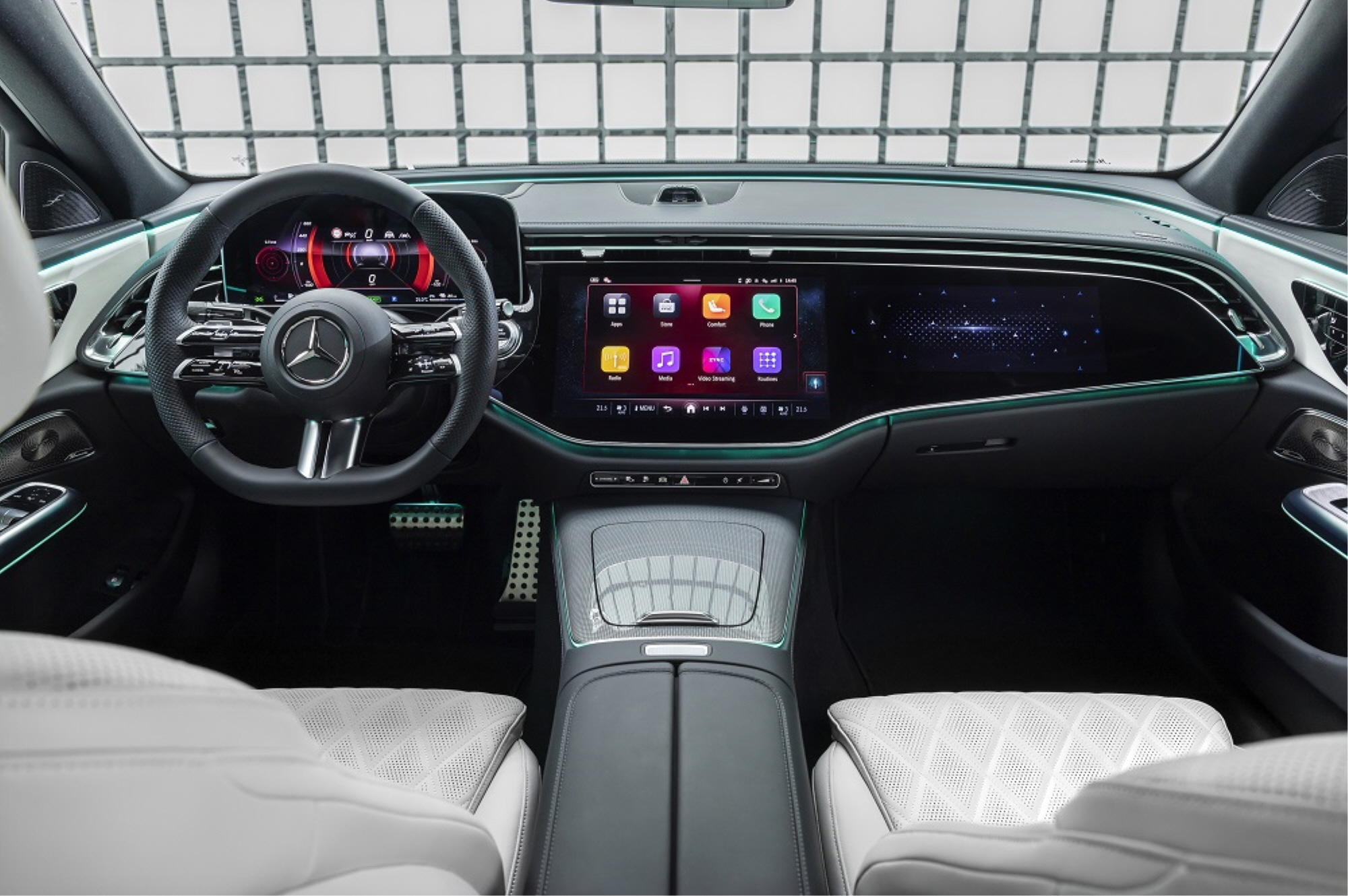
With the full-scale introduction of digital technology in cars, certain items are beginning to disappear.
A prime example is the key, or ignition key. With the advent of the start button, the traditional key has been replaced by smart keys, and now this smart key is also becoming obsolete. Taking it a step further, automated payment systems have made wallets unnecessary.
Mercedes-Benz introduced the digital key for the first time in its 11th generation E-Class, which was revealed at midnight on the 26th. The digital key operates via an NFC antenna that allows you to lock and unlock the car doors. By placing an NFC-enabled smartphone on the wireless charging pad, you can immediately start the car and drive away.
As a driver, you might have experienced forgetting to take your car keys when heading out to the parking lot only to have to return to get them. But now, all you need to do is grab your smartphone. Additionally, the digital key can be used with both iPhones and Android phones.
The digital key is already widely used in South Korea, starting with Hyundai Motor Group and extending to BMW. With the launch of the 11th generation E-Class next year, the digital key is expected to become a dominant trend.
Wallets are also becoming less necessary. This is largely due to the introduction of the expressway Hi-Pass system.
According to the Korea Expressway Corporation, the usage rate of Hi-Pass was 56% in 2012, but it rose to 89% by 2022. In essence, nine out of ten drivers are using Hi-Pass.
The Korea Expressway Corporation is not stopping there; they are also incorporating the Hi-Pass system into McDonald’s drive-thrus, enhancing customer convenience. The response from customers has been overwhelmingly positive. McDonald’s plans to increase the number of participating drive-thrus to 30 by the first half of this year.
In addition to the Korea Expressway Corporation’s Hi-Pass system, Hyundai’s CarPay and SKT’s T-map also feature automated payment functions. Hyundai’s CarPay allows users to pay for gas and parking fees using only the registered credit card in the car.
T-map goes even further, allowing payment for parking fees, electric car charging, valet services, and rental cars with the registered card. Additionally, in Volvo’s connected T-map infotainment system, users can pay for gas and automatically settle drive-thru payments at partner restaurants and coffee shops.
The automotive industry is gradually eliminating items that drivers once needed, adapting to the changing times and the environment. One can’t help but wonder what item will disappear next.
Lee Sang-jin daedusj@autodiary.kr
